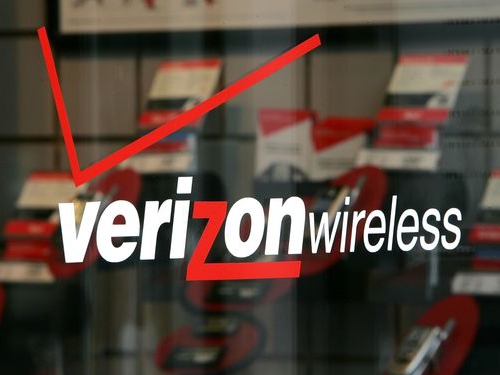Verizon Wireless Offering Wi-Fi Calling Next Year

Verizon Communications CFO Fran Shammo spoke at a conference this week, revealing that the company plans to launch Wi-Fi calling in the middle of 2015.
The news arrives after T-Mobile introduced last week the Un-carrier 7.0 “Wi-Fi Unleashed” service, allowing compatible smartphones to make calls and send texts via Wi-Fi connectivity. The company indicated that new phones will be capable of Wi-Fi calling and texting, and that T-Mobile customers can get a capable phone if they don’t have one already.
“Wi-Fi Un-leashed is a game changer. This is like adding millions of towers to our network in a single day,” said John Legere, president and CEO of T-Mobile. “The difference between us and the traditional carriers is that they’ll do everything they can to make more money off you. We’ll do everything we can to solve your problems, and today, that’s about uniting Wi-Fi with our data strong network for unprecedented coverage.”

As for Verizon, the company won’t have Wi-Fi calling until mid-2015 because it needs to “do some technological work in our network to make it available,” according to Shammo. The Verizon CFO also made it clear that Wi-Fi calling is not the company’s top priority, that Verizon’s voice platform is so “extensively” built that customers don’t need to switch over to Wi-Fi to make calls or send texts.
Shammo also added that if a call did get dumped onto a Wi-Fi connection, Verizon has no way to guarantee the quality of service. According to Fierce Wireless, this was the very reason why Verizon waited so long to launch its Voice over LTE service. The company wanted to make sure it matched the quality offered on its 3G CDMA network.
On that note, last week Ralph de la Vega, CEO of the AT&T's mobility and enterprise business, said that the company plans to pursue Wi-Fi calling in 2015. Like Verizon, the company doesn’t see an urgent need for Wi-Fi calling at this time. Still, Wi-Fi-based voice and text would complement the voice service.
"We don't have a burning desire or need for coverage," de la Vega told CNET at an investor conference. "Other operators with less coverage may pursue it more aggressively."
Stay On the Cutting Edge: Get the Tom's Hardware Newsletter
Get Tom's Hardware's best news and in-depth reviews, straight to your inbox.
Meanwhile, Raleigh-based Republic Wireless makes Wi-Fi calling its main business; cellular kicks in when the user is out of range of the nearest public/personal Wi-Fi network. The company uses proprietary VoIP software to make this happen; it can easily switch between cellular (Sprint’s CDMA network), Wi-Fi and free roaming. The company recently began selling Moto G phones for $149 (and the Moto E for $99) with plans starting at $5 per month.
So the question is this: can Republic Wireless survive once the big four begin offering Wi-Fi calling? “We don’t think any of the national carriers pose a severe threat at the moment. They’ve been watching Republic Wireless very closely for the past three years,” a Republic Wireless representative told Tom’s Hardware.
In a long letter to Tom’s, the representative said that it purposely operated in beta to resolve the issue of moving from wireless to cellular and even scored around 30 patents in the process. Currently, the Republic Wireless engineers are working to smooth out the transition from cellular to Wi-Fi, aka backwards compatible.
So why is Wi-Fi calling such a big deal, especially when many wireless carriers offer unlimited calling? It seems to be cheaper for the wireless carrier and the customer.
“The fact is many of us are around Wi-Fi a good part the time – think about college campuses – 99 percent of them are Wi-Fi enabled,” the Republic Wireless rep said. “In contrast, Republic allows people to buy a high quality Android smartphone at a fair price and then have service for as little as $5 a month for unlimited Wi-Fi everything. $10 a month gives you unlimited Wi-Fi + cellular talk and text. $25 brings unlimited 3G and $40 brings unlimited 4G for devices that support it.”
All of this recent Wi-Fi calling talk began last week thanks to Apple. The just-revealed iPhone 6 supports Wi-Fi calling, and right now T-Mobile is the only major carrier that can handle this connectivity. Wi-Fi calling requires the networks to already have Voice over LTE up and running so that when users leave their house or office, they can continue talking without having to re-dial.
“Consumers win when carriers allow them to use both WiFi and cellular,” the Republic rep added. “With new Android devices coming shortly that do everything the new iPhone does and more, it’s going to be awfully hard to justify paying $650+ for a 16 GB device and more than necessary for service.”
Follow Kevin Parrish @exfileme. Follow us @tomshardware, on Facebook and on Google+.
-
Gurg What this does is put another mail in the coffin of the phone companies. if priced as it should be, can have a home phone again on wi-fi for absolutely minimal cost.Reply -
zanny ReplyWhat this does is put another mail in the coffin of the phone companies. if priced as it should be, can have a home phone again on wi-fi for absolutely minimal cost.
I've been on Freedompop for two months now. The data coverage of Sprint 3G is more than good enough to cover my call needs wherever I may go. And it comes wtih 200 minutes / 500 messages / 500 megabytes a month free. So I think the nail in the coffin is already here. -
rwinches "even scored around 30 patents "Reply
So they're just waiting to patent troll when the big fish get established.
Data speeds at McDonalds is jerky enough so I can't see VoIP/Calling being good.
If you were out of Tower range or Roaming this might be a good option.
Freedompop is high priced if you choose one of the 'real' data plans. They are getting more high speed coverage though. -
allawash If AT&T had pursued this a year ago, I would still be a paying customer. Only place I didn't get good service was at my house. Best they offered me was to buy an additional piece of equipment for hundreds of dollars, pay a monthly fee, and hook it into my router, that I pay for. No thanks!Reply -
tvieson I honestly don't see any advantage to this. Drops in cell communication happen in more rural areas with little to no wireless access than in large city environments were wireless is every where. I can maybe understand taking traffic off the cell towers and placing them on wireless networks, but I'm sure many business or corporate facilities already have there wireless locked down preventing this free access as it is.Reply
Ironically enough, areas with bad cell access are also the same areas with limited to no high speed internet.
The only advantage I see is at home use, and I can't even say how much of an advantage that is. -
fkr as i used to be a verizon tech you will see many people within major city limits that because they are in an apartment or they are just between towers or there house is made of brick that they get no coverage in there house. this will cut down on call volume for tech service and is a great idea.Reply -
godkane Have been using Republic Wireless for several months now that has been doing this for a while now. Glad one of the main wireless companies is changing over. Hopefully the price will drop in half too, like Republic Wireless. $5 for Wi-Fi only, $10 for voice and text, $25 for 3G, $40 for 4G per month.Reply -
Rob_C Letting the Tower hand you off to WiFi (obviously) benefits the Carrier, otherwise _their_ Equipment would not do the handoff.Reply
This is a means of jerking back the 'free' WiFi, by giving you a 'Cookie' when you go to WiFi and making you eat it while your on your Call.
I went WiFi half a dozen years ago. Where I could find open/free WiFi, or while I was in range of my own Router, I used WiFi. I keep my Data off and try to avoid using 'Cellular Data' whenever possible (except for SMS).
If you can find an Application that does Video Chat and works over WiFi you can have free calls whenever you are in range of WiFi. With Cellular-to-WiFi Handoff you need to be certain you do not ROAM from the free (WiFi) Channel to the high cost Cellular Network.
https://www.youtube.com/user/LowLightVideos